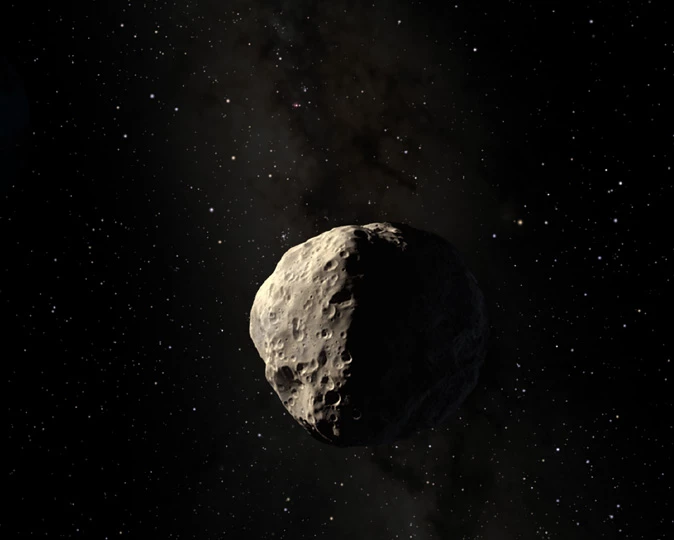How do you deflect a civilization-destroying asteroid that's heading straight for Earth? Shoot paintballs at it. This may sound like an exercise in futility, but if the calculations of Sung Wook Paek are correct, then the sport of running around in the woods shooting splotches of paint at people on the weekends could get a lot more respect.
Paek, a graduate student in MIT’s Department of Aeronautics and Astronautics, was the winner of the 2012 Move an Asteroid Technical Paper Competition, sponsored by the United Nations’ Space Generation Advisory Council. The contest’s purpose was to find ideas for deflecting an asteroid or other near-Earth objects and Paek’s submission joins a growing list of asteroid-fighting solutions ranging from nuclear warheads to gravity tractors.

Pushing asteroids away before they hit the Earth is more than the plot of science fiction thrillers. It’s a very real threat that may have caused the dinosaurs to go extinct 65 million years ago and astronomers regularly track asteroids that could hit us.
One of these is Apophis – a chunk of rock 1,480 feet (451.1 m) in diameter and weighing 27 gigatons. It’s scheduled to pass near the Earth in 2029 when there is a very small chance that it might go through a “gravitational keyhole.” That is, a spot about a half-mile wide where gravitational forces would send it on a collision course with Earth when it returns in 2036. Apophis is the asteroid that Paek used for his calculations.

The idea is remarkably simple. Paek proposes to send a spacecraft to Apophis. Once on station, it would fire two volleys of paintballs at the asteroid weighing a total of five tons (4.5 tonnes). The first volley would strike the front of Apophis and as the asteroid rotated the second volley would hit the back side.
Being hit with five tons of paint would shift Apophis very slightly, but that’s not the point. That’s because the paintballs would coat the asteroid with a five-micrometer-thick layer of paint powder, which would double its albedo or reflectivity. This would effectively turn the entire asteroid into a gigantic solar sail.
Solar sails are a form of propulsion that are exactly what it says on the box. They’re sails that use the Sun instead of wind to push them along. Sunlight landing on a spacecraft may not seem to exert much pressure, but in the frictionless void of space it can be surprisingly powerful. It’s been known to move geosynchronous satellites, and NASA’s Messenger space probe uses solar sailing as part of its attitude control.
Usually, designs for solar sails involve gossamer-like sails made out of mylar spread out over a huge area. Paek’s idea is to make an asteroid reflective enough that its surface does the job of a sail to push it using the pressure of solar radiation. To an observer, the effect would be as imperceptible as watching the hour hand of a clock move, but over a period of 20 years the solar radiation could push Apophis off its trajectory.
It’s a novel and very simple approach with the added bonus of not having to watch Bruce Willis outrun an atomic explosion.
The video below outlines the paintball deflection plan.
Source: MIT






